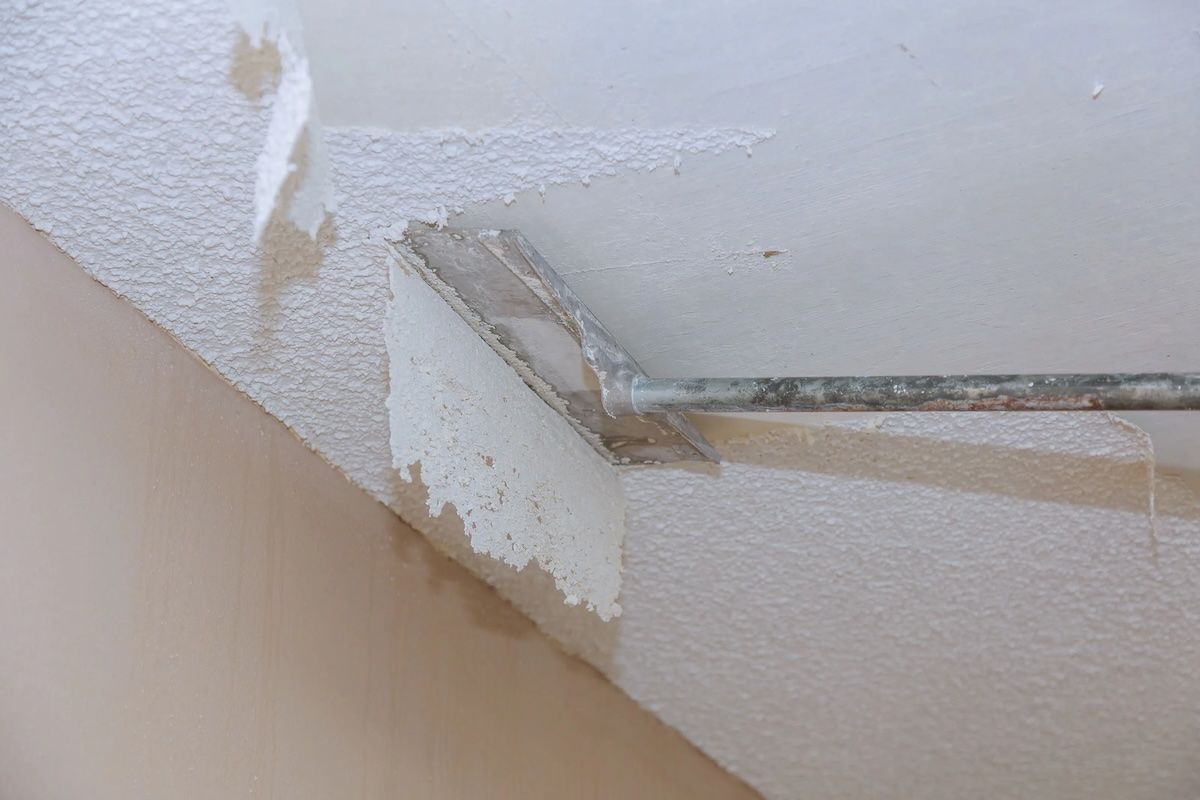Best Ways to Get Equity Out of Your House
For many homeowners, the equity built up in their house over time represents a significant yet often underutilized financial resource. The hard-earned equity in your home can do more than just sit there passively – you have options to leverage it strategically and put it to work.
Whether you’re planning major renovations, paying for your children’s education, investing in rental properties, or simply consolidating high-interest debts, it’s helpful to know how to get equity out of your home. Your home equity can provide a pool of capital that lets you achieve your goals.
Of course, equity doesn’t appear magically when you need it. Accessing the wealth locked in your home requires understanding how much you have and evaluating the most suitable financial methods for your situation.
If you want to make the most out of your equity, discover the best ways to get equity out of your house and how to avoid unnecessary risk.
What is Home Equity?
Your home equity is your ownership stake in your home; it’s the current market value of your property minus any outstanding mortgage debt still owed on it.
As a homeowner, you accumulate equity by:
- By making monthly mortgage payments.
The principal portion of each payment reduces your loan principal and increases equity. - Appreciation of your home’s value.
As real estate values rise over tie, your home becomes worth more, again boosting your equity. - Value-add projects, such as home renovations and additions.
When you update or enlarge your home, you are adding value to your property and subsequently increasing its market value.
The more equity you have, the greater financial flexibility and borrowing power your asset provides.
How to Calculate Home Equity
Figuring out how much equity you have available requires determining your home’s current fair market value (FMV).
According to the IRS, “Fair market value (FMV) is the price a property would sell for on the open market. It is the price that would be agreed on between a willing buyer and a willing seller, with neither being required to act and both having reasonable knowledge of the relevant facts.”
While online estimates can provide a ballpark, getting an accurate FMV requires professional input. Many owners will ask a real estate agent for a comparative market analysis to understand how much their home is worth. However, you can also hire a professional appraiser to formally assess your home’s value.
To calculate your equity, subtract your remaining mortgage balance from the property’s FMV. The difference is your available equity.
How to Get Equity Out of Your Home
There are several options homeowners can use to access the equity they’ve built up in their property. However, with each option, owners must meet certain qualifications based on their credit, income, and amount of home equity. Just because you have equity doesn’t guarantee you can tap into it.
If you want to use the equity in your home, understand the pros and cons of the different loan options you have available.
1. Home Equity Loans
A home equity loan gives homeowners a way to leverage the equity in their property by borrowing a large lump sum of cash. With a home equity loan, you use your built-up home equity as collateral to secure the loan, similar to a second mortgage.
A home equity loan is tied directly to your home’s value, giving lenders more security and allowing them to offer lower interest rates than most other financing options, such as credit cards, personal loans, and lines of credit.
Pros of a Home Equity Loan
A home equity loan is an attractive financing option for homeowners looking to tap into their real estate investment. It’s often used to finance the purchase of a second home or investment property, or for funding a large renovation project.
Several benefits of this loan type include:
- Fixed Interest Rates
Home equity loans typically come with a fixed interest rate that remains constant over the full loan repayment term (usually 5-30 years). - Predictable Payments
The fixed interest rate keeps monthly payments the same over the full loan term. This consistency makes it easier for borrowers to budget year after year. - Lower Interest Rates
Lenders view home equity loans as a lower risk because they are secured by real property. As a result, they offer more favorable interest rates compared to unsecured financing options. This is particularly helpful when borrowing large sums of money. Lower rates save borrowers thousands on interest costs over the loan term. - Possible Tax Deductions
If loan funds are used for approved purposes like renovating, building, or substantially improving your home, you may qualify for tax deductions on the interest paid. This can lead to substantial savings each year at tax time and over the full loan repayment period.
Cons of a Home Equity Loan
While home equity loans offer several advantages, they also come with drawbacks to consider. Some key potential downsides include:
- Fixed Interest Rates
While fixed rates provide consistency, if market interest rates decline, you remain stuck at the higher rate for the full repayment term. - Strict Credit Requirements
Lenders heavily emphasize your credit score, typically requiring a minimum score between 660-700. Those with lower scores will have difficulty qualifying and pay higher interest rates. - Risk of Foreclosure
Your home secures the loan, so if you default, you could lose your property. Avoid this worst-case outcome by only borrowing what you can realistically repay. - Closing Fees & Upfront Fees
Closing costs like appraisal, origination, and title fees range from 2-5% of the total loan amount.
How to Get a Home Equity Loan
Having weighed the pros and cons, how exactly do you get approved for one of these second mortgages? The loan process requires a few key steps.
Here’s what to expect when applying for a home equity loan:
- A minimum credit score of 620.
- A debt-to-income (DTI) of 43% or less after loan origination.
- At least 15% equity in your property.
- Complete the application paperwork.
- A steady income history over the past couple of years.
- Income verification information such as W-2s and paystubs.
- Reliable payment history.
- A professional home appraisal to confirm market value.
Home Equity Line of Credit (HELOC)
A HELOC is a revolving credit line, similar to a credit card, secured against your property value. Unlike a home equity loan, which provides a lump sum, a HELOC offers flexible ongoing access to funds that can be withdrawn, repaid, and withdrawn again up to a set limit.
A HELOC’s dynamic access to financing makes it useful for recurring expenses or unpredictable costs that crop up sporadically. However, borrowers need financial discipline to avoid misusing HELOCs or overestimating their ability to manage increased monthly payments down the line.
Pros of a HELOC
HELOC’s several benefits make it an attractive option for some homeowners; key advantages include:
- Access to Cash Over Time
A HELOC allows the borrower to withdraw funds as needed over an extended period – often 10-15 years. They provide the flexibility to tap into funds at will, similar to a credit card. - Pay Interest Only on What You Borrow
HELOCs only require borrowers to pay interest on the amounts withdrawn, not the full credit limit. So if you’re approved for a $50,000 line but only withdraw $20,000, you only pay interest on that $20,000. - No Restrictions on Use of Funds
HELOC funds can be used for any purpose, such as renovations, vehicle purchases, debt consolidation, unexpected medical bills, or purchasing an investment property. - High Credit Limits
Depending on your home equity, lenders may approve HELOCs with very high credit limits. Some lenders offer limits of up to $500,000 for qualified borrowers, far more than personal loans or credit cards. - Low Minimum Payments
Many lenders only require interest-only payments on HELOCs during the draw period. This keeps monthly costs low on borrowed amounts. - Possible Tax Deductions
If used for approved home repairs and improvements, HELOC interest may qualify as a tax deduction per IRS rules.
Cons of a HELOC
However, HELOCs also come with some drawbacks to weigh; key downsides include:
- Variable Interest Rates
The interest rate on a HELOC is variable, meaning it can fluctuate up or down over time. So even if you get a low rate when you first take out the HELOC, that rate could rise significantly later, increasing your monthly payments. - Your Home is Collateral
With a HELOC, your home serves as collateral for the loan. If you fail to repay the HELOC, the lender can foreclose on your home. - Limits Available Equity Over Time
As you borrow against your home’s equity via the HELOC, you reduce the equity you have available for other needs. This can limit your options if you need to leverage your home equity again later. - Payments May Increase Substantially
Since HELOCs have variable rates, your monthly payments can increase a lot, especially when the initial draw period ends. - Must Be Repaid By Loan Period
HELOCs have a set repayment period, usually 20 years. You must repay the full HELOC balance by the end of that term. If not paid off, the lender can demand full repayment immediately.
How to get a HELOC
Getting approved for a HELOC involves submitting an application and documentation to demonstrate you meet the lender’s requirements – you’ll need:
- A credit score of at least 620, and ideally over 700.
- Total DTI ratio below 43% after HELOC origination.
- At least 15% equity is established in your home.
- Income and employment verification.
- Solid payment history.
- Income verification information is needed – W-2s and paystubs.
- Financial statements proving assets and obligations.
- Home appraisal to confirm property value.
- Government-issued photo ID.
- Tax returns from the past couple of years to verify your income history.
- Recent mortgage statements.
- Credit report.
- Proof of homeowners insurance.
The HELOC application process is similar to applying for a mortgage. You’ll go through credit checks, affordability assessments, and home valuations. Lenders check to make sure you have sufficient equity and income to manage a revolving credit line.
Cash-Out Refinance
A cash-out refinance is when a homeowner refinances their mortgage for more than the original principal balance owed, therefore converting home equity into cash.
Essentially, you refinance your mortgage for more than you currently owe and pocket the difference as a tax-free lump sum. It taps into the ownership stake you’ve built up through years of monthly payments and appreciation.
While a cash-out refinance can be a great way to pay for major expenses, it also chips away at the equity cushion you’ve worked to build and can result in higher mortgage payments. So, weigh the pros and cons carefully before refinancing.
Pros of Cash-Out Refinance
While risky if used irresponsibly, cash-out refinancing does have some potential upsides:
- Access Large Amounts of Funds
Unlike home equity loans or lines of credit, with a cash-out refinance, you can tap into a bigger portion of your home’s equity, often 80% or more of the value. This allows you to withdraw substantial funds all at once if needed. - Lower Interest Rates
Compared to other ways of borrowing, like credit cards or personal loans, cash-out refinance rates are generally much lower. This makes them one of the most affordable debt options. - Consolidate Debts into One Payment
Consolidate high-interest debts like credit cards or personal loans into a lower-rate cash-out mortgage to simplify finances by combining multiple debts into one predictable monthly payment. - Can Fund Renovations that Increase Your Home Value
Proceeds from a cash-out refinance can be used to renovate. Strategic remodels like kitchen overhauls can increase the home’s resale value, which in turn builds additional equity. - Possible Tax Deductions
If cash-out funds are used for eligible home improvements, the interest on the refinanced mortgage may be tax deductible – consult a tax professional to understand how to claim deductions on refi interest.
Cons of Cash-Out Refinance
Some key downsides are also important to factor in:
- Large Closing Costs
Completing a cash-out refinance comes with significant closing fees, often totaling 2-5% of the new mortgage amount. Upfront costs can be thousands, from appraisal fees, lender origination fees, and title searches. - Risk of Foreclosure
With a larger mortgage balance comes a larger payment. Failing to make the new monthly payments could lead the lender to foreclose on your home. - Lose Hard-Earned Home Equity
When you cash out refinance, you drain the equity in your home that you’ve slowly built through years of mortgage payments. - Potential for Higher Interest Rate
If you previously locked in an ultra-low mortgage rate, today’s rates on a cash-out refi are likely higher. This results in greater interest costs and monthly payments over the loan’s lifespan. - Extends Total Loan Term
Most cash-out refinances restart the clock with a new 30-year term. By extending the payoff date, you repay interest for a longer period versus your prior mortgage.
How to Get a Cash-Out Refinance
A cash-out refinance replaces your existing mortgage with a new larger loan, letting you pull cash from your home equity. To get approved, you’ll need to meet these qualifications:
- Credit score of 620 or higher.
- DTI of 45% or less.
- At least 20% home equity.
- Submitted loan application and required documentation like bank statements, tax returns, and income verification.
- Home appraisal to confirm property value.
- Verified finances and repayment ability by the lender.
Additionally, with conventional, VA, and FHA loans, the owner must own and live in the property for 6-12 months before qualifying for a cash-out refinance, with some exceptions.
Reverse Mortgage
A reverse mortgage is a special type of home loan designed for homeowners aged 62 and older. It allows seniors to convert part of their home’s equity into cash without monthly repayments. The loan only becomes due when the borrower moves, sells the home or passes away. However, during the term of the loan, interest accrues, so reverse mortgages are best for borrowers who know they can repay them, or who don’t expect their heirs to retain their home upon death.
Pros of Reverse Mortgages
While not suitable for everyone, reverse mortgages have potential benefits for older homeowners:
- Tax-Free Cash from Home Equity
Reverse mortgages allow seniors to access their home’s equity without monthly repayments. The funds received are not considered taxable income by the IRS either. An influx of tax-free cash can supplement retirement funds. - Age in Place
For many older homeowners, staying in their homes as they age is a priority. Reverse mortgages provide cash that supports this goal without requiring seniors to sell their property and relocate. - Pay Off Existing Mortgages
Proceeds from a reverse mortgage can eliminate outstanding mortgages and free up monthly cash flow. That means instead of seniors paying down their mortgage each month, their mortgage pays them. - Home ImprovementsMajor home repairs like a new roof or HVAC equipment are common in older houses. Reverse mortgage funds offer a way to finance upgrades and maintain the home’s condition without straining limited retirement budgets.
- Added Retirement Income
Between shrinking nest eggs, rising healthcare costs, and living expenses, retirees often find themselves cash-strapped. Reverse mortgages supply supplementary income to cover retirement shortfalls without requiring monthly repayments. - Access Equity Without Selling
Selling the family home and downsizing is emotionally and financially difficult. Reverse mortgages allow seniors to tap into built-up home equity while still living in the home long-term.
Cons of Reverse Mortgage
While there are many benefits to reverse mortgages, they also have some risks and drawbacks:
- Origination Fees and Closing Costs
A reverse mortgage comes with upfront origination fees charged by the lender, as well as closing costs like appraisal and title fees. These costs can amount to thousands of dollars due at closing. - Interest Accrues, Equity Depletes
As you receive funds from a reverse mortgage, interest accrues on the loan balance, and your home equity continues to be depleted over time. - Heirs Receive Less Inheritance
Since the loan balance grows as interest accrues, heirs will inherit less equity when the home is eventually sold. The lender must be fully repaid, leaving fewer proceeds. - Risk Losing Home if Taxes and Fees Aren’t Paid
Even with a reverse mortgage, borrowers must continue to pay property taxes, insurance, and HOA fees. Failure to do so could result in foreclosure by the lender. - Can Impact Government Benefit Eligibility
If lump sum proceeds push resources over asset limits, reverse mortgages can potentially impact eligibility for some government programs like Medicaid and SSI. This should be considered upfront.
While they provide cash, reverse mortgages reduce the equity heirs receive and put the home at risk if obligations aren’t met. Most reverse mortgages must be repaid by the heirs within one to 6 months of the owner’s death. The loan can be repaid through the sale of the property, with a refinance, or with cash paid by the heirs.
How to Get a Reverse Mortgage
The requirements for getting approved for a reverse mortgage are:
- Meeting age requirements, usually 62 or older.
- Attending required counseling sessions.
- Sufficient home equity, typically 50% or more.
- Must continue to pay their property taxes and homeowner’s insurance.
- Maintain the property’s condition.
- Undergo a financial assessment; depending on the results, you may be required to set aside a portion of the proceeds to pay the loan.
- A professional home appraisal.
In addition to age and equity requirements, applicants must show they can continue affording property taxes and insurance after getting the reverse mortgage.
While not easy money, reverse mortgages provide a way for seniors to live comfortably in their homes throughout their retirement.
Evaluating the Best Option to Access Your Home Equity
With several methods available to leverage your home’s equity, how do you choose what’s right for your situation?
Assessing Financial Goals and Needs
Aligning your home equity strategy with your broader financial objectives is crucial.
Before deciding on a method to access your home equity, consider if:
- You need funds for one major one-time expense like a home addition or investment property. If you need a single lump sum, a home equity loan or cash-out refinance may suit your needs best.
- You have ongoing periodic expenses such as college tuition bills, the flexibility of a HELOC allows you to borrow only what you require when you need it.
- Your goal is lowering monthly housing costs, a reverse mortgage provides cash flow, and can actually lower your monthly payment if your interest rate goes down.
Comparing Interest Rates and Fees
The costs associated with loans can vary widely. Generally, home equity loans and lines of credit have lower rates than credit cards or personal loans, while cash-out refinances may offer the lowest rates of all.
However, cash-out refinancing comes with closing costs reaching 5% of the total loan amount. Shop around to find the most affordable option for your situation, and remember to include closing costs in your evaluation.
Understanding Tax Implications
Taxes can significantly influence the true costs of accessing home equity. Using HELOC taps equity without incurring capital gains taxes, which are only paid when the home is sold. This makes them useful for property investors looking to expand their real estate portfolio.
Capital gains taxes are only assessed if you sell your primary residence for significantly more than you paid for it. With a home equity loan or line of credit, you can access equity without selling, avoiding capital gains.
However, interest is only tax-deductible in limited cases, like if used for home improvements. Talk to your accountant to fully understand the tax implications of accessing your home equity.
Risks and Considerations Before You Get Equity Out of Your Home
While your equity provides useful financial flexibility, utilizing it does carry some risks that require careful thought. Before you pull money out of your home, understand the potential risks and how it could impact your investment.
Debt Increase and Repayment Terms
Any equity you borrow against becomes an added debt that must be repaid with interest. Furthermore, it reduces the portion of your home you own that is free and clear. In many cases, accessing your equity extends your home loan repayment timeline by years or even decades.
For example, doing a cash-out refinance with a fresh 30-year mortgage late in life or borrowing against your paid-off home can strap you down with payments as you step into retirement.
Impact on Future Home Sales
When you eventually sell your home, the proceeds must first repay what you borrowed against the equity. When you’ve used some of that equity before selling, your proceeds will be less when you ultimately sell your home.
Furthermore, taking equity out when your home value is at a peak leaves you vulnerable if the market drops. Owners need to be aware that if the market drops, they may end up owing more money than their property is worth, which could prevent them from selling or result in a short sale.
Potential for Foreclosure
Accessing your equity through a Home Equity Loan, HELOC, or cash-out refinancing means increasing the debt against your home and increasing monthly payment amounts. Failure to meet repayment obligations could result in foreclosure by the lender.
This worst-case scenario means the loss of your property, but it is a possibility, so owners must be sure they can continue to meet debt repayments. Only borrow what you’re highly confident you can repay on schedule.
Making the Most of Your Hard-Earned Home Equity
The equity in your home is a valuable asset but also one that requires careful thought and planning to leverage properly. The best way to get equity out of your house depends entirely on your personal financial situation and goals.
For some, a HELOC provides useful flexibility. For others, a lump-sum home equity loan unlocks funds for major investments. In a strong housing market, a cash-out refinance at low rates can be opportune. And for cash-strapped seniors, reverse mortgages offer income without monthly payments. But there are also risks to weigh, from repayment burdens to foreclosure.
Understand how equity works, assess your needs, and evaluate all options to strategically use your equity while protecting your future interests. Connect with a local real estate professional through FastExpert today for guidance on your current home value and equity position.





